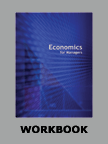The Indian Pharma Industry under the Product Patent Regime
|
|
ICMR HOME | Case Studies Collection
Case Details:
Case Code : BSTR169
Case Length : 26 Pages
Period : 1990-2005
Organization : -
Pub Date : 2005
Teaching Note :Not Available
Countries : India
Industry : Pharmaceutical
To download The Indian Pharma Industry under the Product Patent Regime case study (Case Code:
BSTR169) click on the button below, and select the case from the list of available cases:

OR

Buy With PayPal
|
Price:
For delivery in electronic format: Rs. 700;
For delivery through courier (within India): Rs. 700 + Shipping & Handling Charges extra
» Business Strategy Case Studies
» Case Studies Collection
» Business Strategy Short Case Studies
» View Detailed Pricing Info
» How To Order This Case
» Business Case Studies
» Case Studies by Area
» Case Studies by Industry
» Case Studies by Company
Please note:
This case study was compiled from published sources, and is intended to be used as a basis for class discussion. It is not intended to illustrate either effective or ineffective handling of a management situation. Nor is it a primary information source.
Chat with us

Please leave your feedback

|
|




<< Previous
Growth and Nature of the Industry
In 1901, Bengal Chemical & Pharmaceutical Company, the first Indian pharmaceutical manufacturer, was set up in Calcutta5. Over the years the Indian Pharma industry had evolved around the opportunities presented in the regulated environment:
|
• Lack of product patent: The Indian Patent Act 1970, allowed the Indian
companies to reverse-engineer patented molecules and launch them in the domestic
market.
• Drugs Price Control Order (DPCO): Price ceiling under DPCO limited the
margins and shifted the focus on cost control
• Foreign Exchange Regulated Act (FERA): Foreign Exchange Regulated Act
led to reduced MNC exposure in India.
• Small Scale Industry (SSI): Small-scale industry exemptions led to
proliferation of small formulation manufacturers and low cost drug
manufacturers.
|

|
In the 1990s, India was looked upon as a source of relatively
less expensive pharma products. In 1994, India signed the Trade Related
Intellectual Property Rights (TRIPS) agreement.
|
|
Indian companies established themselves as suppliers
of Active Pharmaceutical Ingredients (APIs) and intermediates for MNCs.
Large Indian generics6 companies
moved up the value chain to offer custom synthesis and contract
manufacturing services for patented molecules7.
(Refer Table I for growth of the industry till the late 1990s).
In 2002-2003, retail sales for formulations in India reached Rs 187.9
billion, a 16.6% growth over 2002. Domestic companies had a market share
of over 75% in the local market. In the domestic market, anti-infectives
formed the largest therapeutic segment in domestic sales... |
Excerpts >>
|










